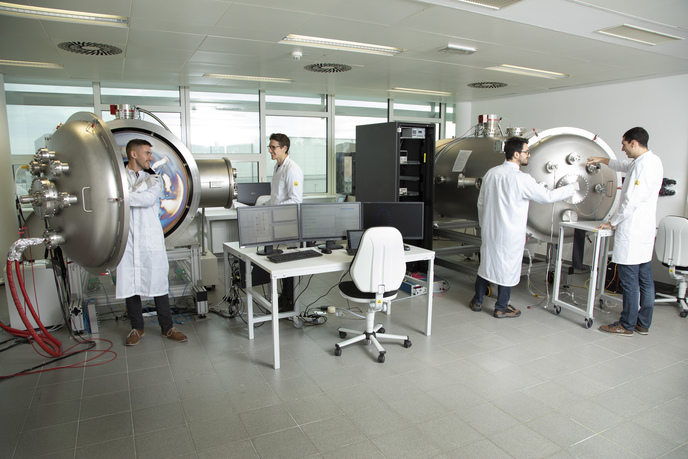A modular propulsion system for small satellites
From positioning to telecommunications and Earth observation, society is becoming increasingly dependent on satellite-based services. In fact, the global market for satellite services is expected to exceed EUR 5 billion in 2021 – up from EUR 2 billion in 2016. Much of this growth can be attributed to a push away from the large, complex and expensive satellites of yesterday in favour of using clusters, or constellations, of small satellites – some weighing no more than a kilogram. Although these small satellites have lowered manufacturing costs, there remains a significant roadblock to achieving scale: the propulsion system. “Because many of these satellites are launched without a propulsion system, they are quite limited in what they can do,” says Alexander Reissner, CEO and founder of ENPULSION, an Austrian space tech company. “Not only do they need to be replaced more often than bigger satellites, they are also limited in terms of orbit manoeuvres, flight formation, and passive deorbiting at end of life.” With the support of EU funding, ENPULSION has developed a solution to the propulsion barrier. It is called the IFM Micro Thruster and is a compact, modular propulsion system specifically designed for small satellites ranging from 1 to 500 kg.
Adapting Field Emission Electric Propulsion for small spacecraft
The IFM Micro Thruster is based on the design of the IFM Nano Thruster, which was developed for small satellites. ENPULSION specifically re-engineered this design for larger satellites of up to 500 kilograms. “The main goal of the project was to scale up the Field Emission Electric Propulsion (FEEP) technology from the already existing propulsion solution into a new, more advanced, and more capable product,” explains Reissner. FEEP is an advanced electrostatic space propulsion system that consists of an emitter and an accelerator electrode and uses liquid metal as a propellant. Building on this technology, the IFM Micro Thruster has an input power of 100 watts, producing up to 1.5 mN of thrust and providing 50 kNs of total impulse – making it particularly well-adapted to small and medium-sized spacecraft. Because the IFM Micro Thruster doesn’t contain pressure vessels or energetic chemicals, it can be launched from any rocket – or even from the International Space Station. Both the thruster and propellant are contained in a 14x12x10 cm module that can be bolted directly to any flat panel. A separate tank or fluid piping is not required, thus saving more space. “The IFM Micro Thruster’s high specific impulse and unrivalled control precision make it the perfect solution for station keeping and attitude control,” says Reissner. “Furthermore, end-of-life operations can be performed at the most optimal operation point depending on remaining propellant quantities.”
From start-up to SME
Thanks to the support of EU funding, ENPULSION grew its team from just six to nearly 30 as it transitioned from being a start-up into an established SME. During the course of the project, the company became the first space tech SME to receive ISO 9001 certification. They were also able to establish relationships with key industry players, such as Airbus and Thales. “We currently have 27 thrusters in space and, thanks to significant market demand, many more will be joining them soon,” adds Reissner.
Keywords
IFM Micro Thruster, satellites, modular propulsion system, Earth observation, ENPULSION, Field Emission Electric Propulsion, International Space Station



